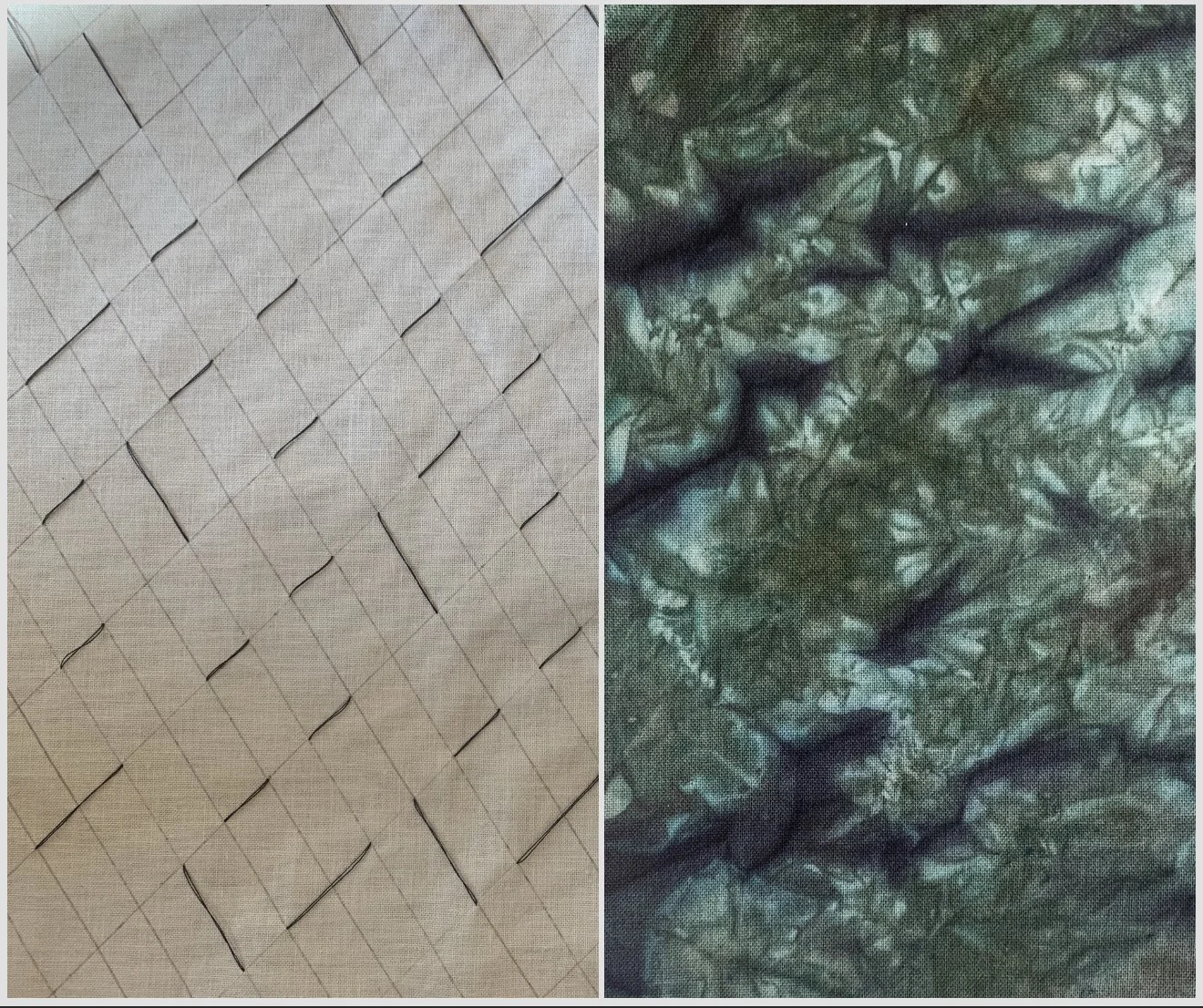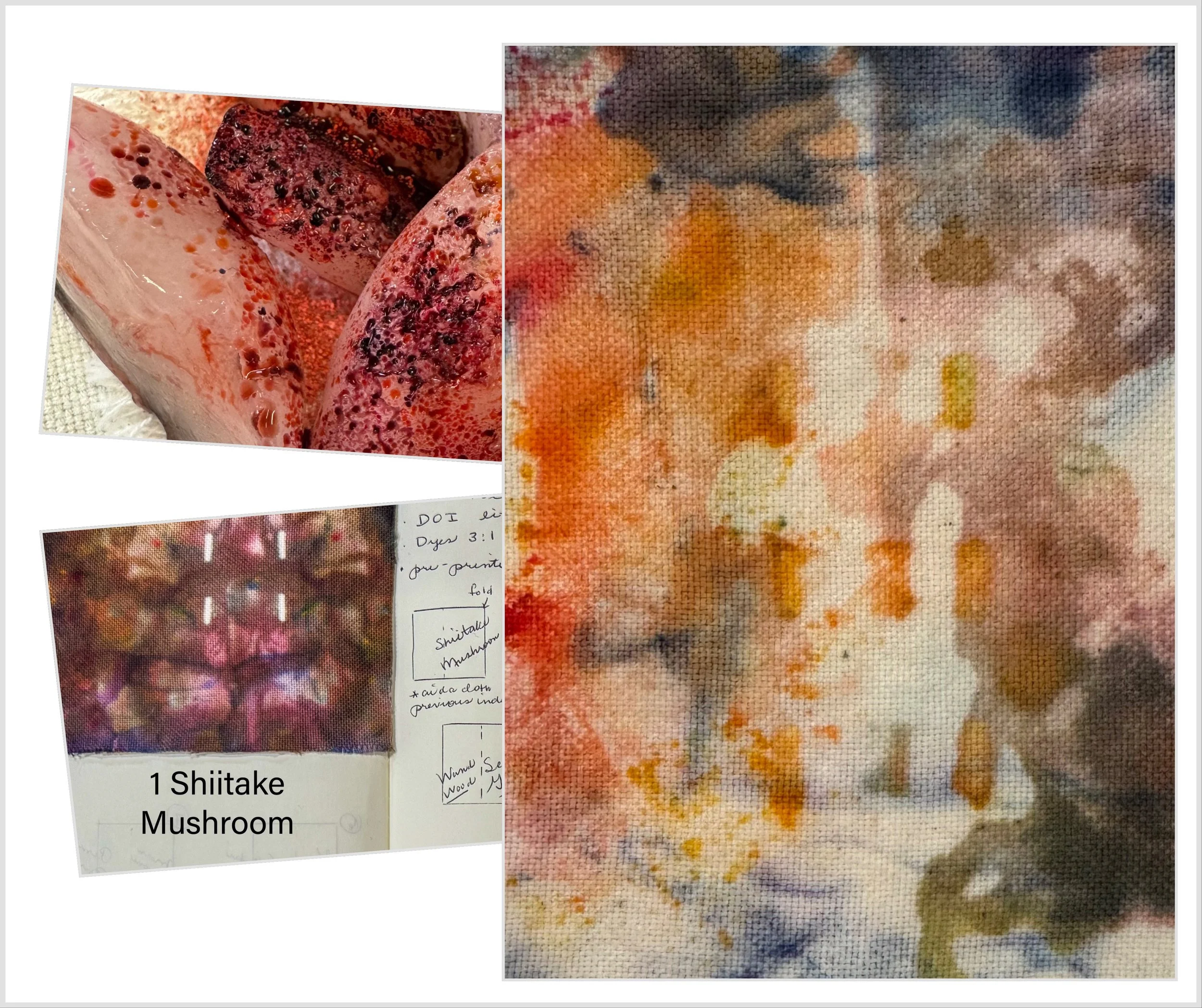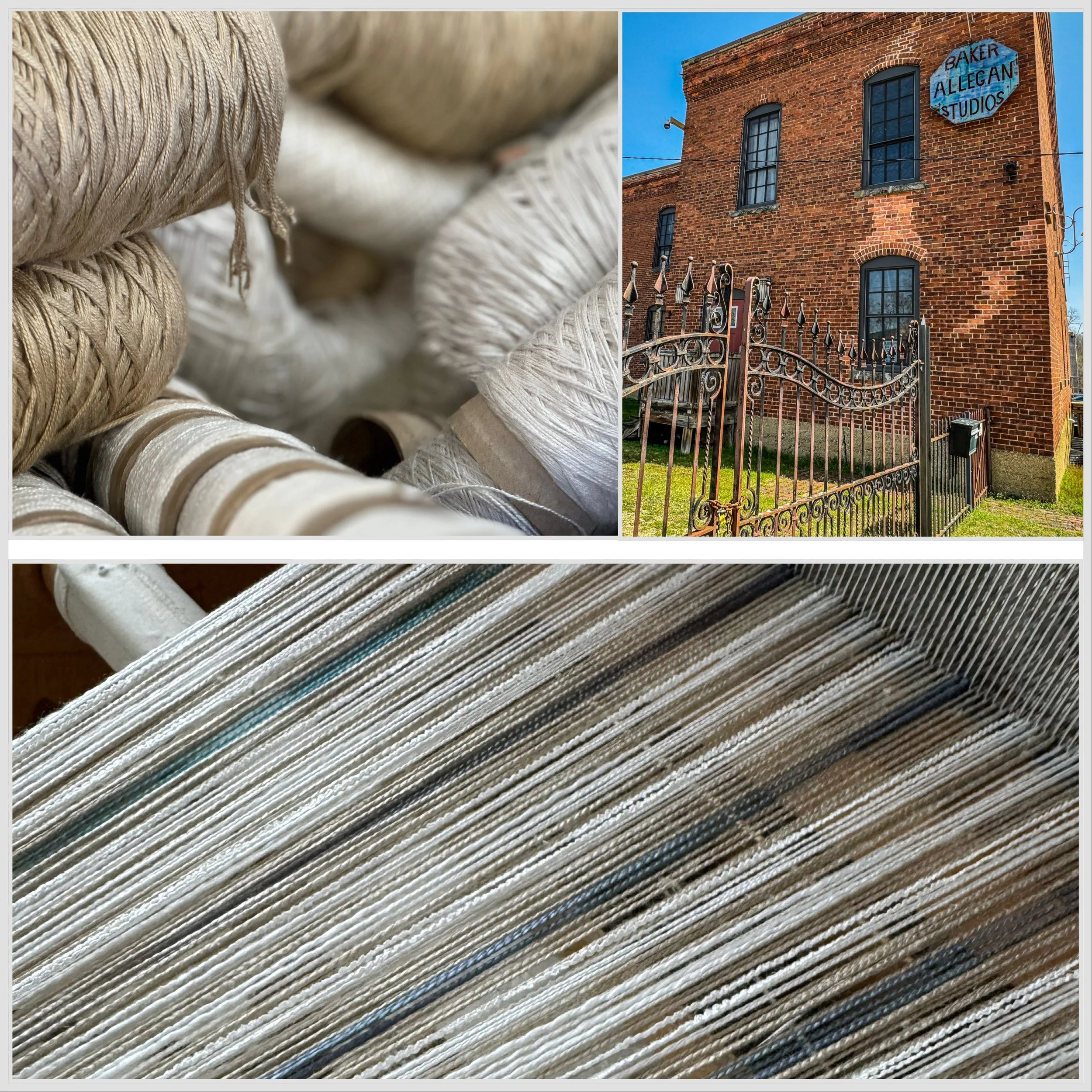Stitched Shibori and More Ice Dye Samples
I loved stitching and sewing as a child! Stitched Shibori and creating resists on fabric to explore the dye splitting process provides a lot of opportunity to study color as well as surface design on cloth. In addition, it has applications which can be applied to woven shibori. An earlier fall workshop with David Heustess sponsored by Michigan League of Handweavers provide me with additional resources to explore as to one of my favorites I referenced in my Ice Dyeing Workshop Monograph Shibori for Textile Artists by Janice Gunner. Although there is some cross-over material the book Stitched Shibori Technique, Innovation, Pattern, Design by Jane Callender got me excited about working on a grid.
Sample 1: 5” x 5” cotton square using pre-drawn undulating curves. The curves were then folded and stitched close to fold using a running stitch - a method known as Ori Nui (fold and stitch). Pattern is referred to as Takewaku. DUI using Moonstone and Wand Wood by Happy Cat Tie Die. Although the dye colors might not be a choice of palette, the resulting pattern on cloth makes for great surface design.
Sample 2: 10” x 10” cotton muslin with a pre-drawn grid of parallel lines about an inch apart. The stitching is somewhat random, but I still love the resulting fabric. Note that some stitches produce peaks and valleys approximately 2” while others are only 1”. The sample was ice dyed using Foggy Lake by Happy Cat Tie Dye and Indigo Blue.
Sample 3: 10” x 10” cotton square uses a pre-drawn circle grid with parallel lines inside about 1/2” or 1” apart. In addition, a layer of 5”x5” fabric was added on top. Stitching is perpendicular to parallel lines in a circular pattern. Resulting fabric bottom layer shows a lot of detail in color splits.
Sample 4: Sashiko Cotton cloth with a double diamond grid (pre-printed) from Kimonomono. Thread count appears very open in cloth. First Diamond pattern was stitched in one direction and then 2nd direction and then gathered/tied. One pull thread was completely pulled out by accident prior to dyeing. DUI using Wand Wood and Moonstone. Resulting cloth showed very faint Diamond stitching.
Sample 5: 5” x 5” cotton square using a pre-drawn grid of undulating lines. Stitching is at right angles to the grid producing an undulating lines pattern referred to as Takewaku. No folds as in sample 1. DUI using Moonstone and Wand Wood. Resulting pattern on fabric is reminiscent of woven shibori structure.
I ordered some new to me dyes from Happy Cat Tie Dye. Her dyes are so much fun to play with so a series of testing was planned. I had some very fine cotton Aida cloth that had been previously dyed around the edges with Indigo Blue and my usual 5” x 5” cotton quilt squares. Tests were done in three different tubs using DUI and then DOI. All samples were layed flat in the tub and I decreased the amount of ice I used with each sample test. My dye journal below shows Sample 5 using Owl Bear from Happy Cat Tie Dye and Wasabi from Dharma on a folded pre-printed cotton fabric (triangle print). Small wonder clips were used on the fold. The sample above in the photo shows Owl Bear alone with rich browns and pinks that was completely submerged in the muck (DUI). The bottom sample was done in a separate tub using a very small amount of ice (DOI) and the dyes migrated randomly as the ice melted over the cotton Aida cloth. The cotton Aida cloth was also folded using three Wonder clips. The left part of the fold was on top and shows more dye migration than the right. I tested a small amount of new rayon Boucle (2,200 ypp) from Baker Allegan Studio in Michigan with Indigo Blue.
I try to post what I’m up to on social media and I got a big surprise when posting a photo of ice with dye powder over it! Quite a few individuals thought it looked like raw chicken! So here is my resulting “chicken fabric” which used Aida cloth and Shiitake Mushroom. In addition a second sample is shown using Wand Wood and a small bit of Oxblood Red.
I really loved using the fine cotton Aida cloth. Testing the movement on Aida cloth is hopefully going to give me an indication on how movement will occur on my next Woven Shibori sample. So many things to think about and ideas are running through my mind! I picked up some wonderful yarns for dyeing at Baker Allegan Studios: Mulberry Silk, Rayon Boucle, and a Rayon Flake. The mulberry silks all had subtle color differences. Baker Allegan Studios has a shop for online sales called Old Mill Yarns. I’ve already warped my loom using all three yarns with some remnant ice dyed yarns.
If you missed my latest NatalieWoven Notes, I’ve been working on a series of Notes that take my Deflected Doubleweave drafts that include a tie-up change to weave colorful pleats or Woven Shibori! The StairStep Deflected Doubleweave is one pattern! At the end of the Notes I provide a draft to weave the following:










